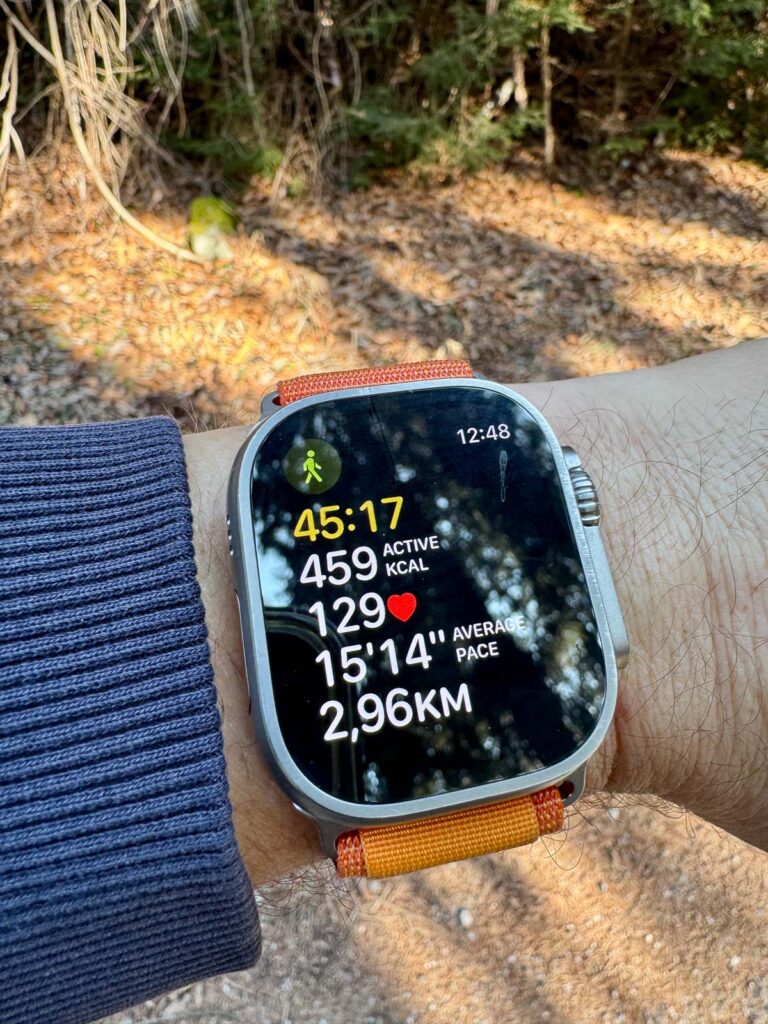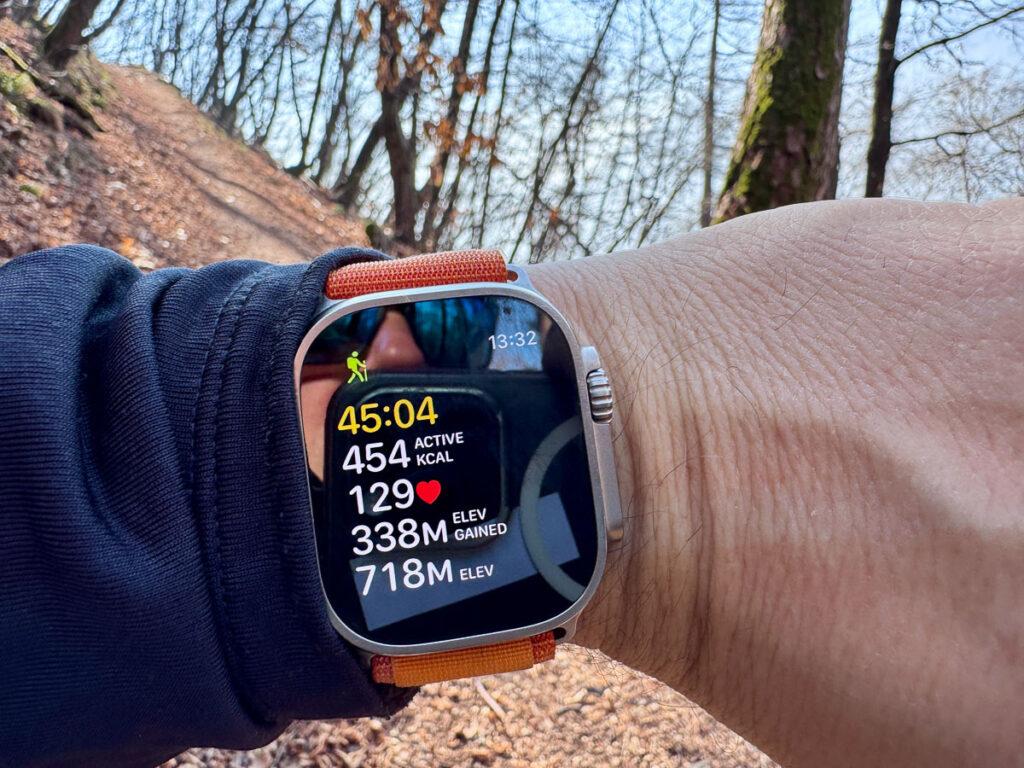When you’re on a body transformation journey, every workout counts—even when that workout is a hike in the mountains. As part of my 6‑month transformation, I track every calorie, step, and workout. Recently, a saddle sore forced me to take a break from cycling, so I turned to hiking. Living near the mountains made it the perfect alternative. In this article, I’ll answer several key questions, such as:
Using my own real-life data from two recent hikes—with detailed data from my Apple Watch Ultra and Strava screenshots—I’ve gathered insights that might help you plan your own outdoor workouts.
Pushing the Limits on an Uphill Trek
Route: 7.76 km
Elevation Gain (Ascent): 504 m
Duration of Ascent: 1 hour
Calorie Burn:
After 45 minutes: ~450 kcal
After 1 hour (ascent): ~616 kcal
Including a 40‑minute descent: Total ~923 kcal
Key Takeaways:
I maintained my heart rate in Zone 2 (around 120–130 bpm) during the uphill climb, which is ideal for fat burning.
On the uphill portion, I burned roughly 10 kcal per minute.
During the descent, my heart rate dropped to around 105–110 bpm, indicating a lower intensity and calorie burn compared to the ascent. Overall, about two‑thirds of the total calories were burned during the ascent, with the descent accounting for the remaining one‑third.

Consistent Results in a Different Region
Route: 6.79 km
Elevation Gain: 367 m
Duration of Ascent: 48 min
Calorie Burn:
After 48 minutes: ~486 kcal
Including the descent: Total ~694 kcal
Key Takeaways:
Even with a slightly shorter route and lower elevation gain, the calorie burn pattern remained similar.
The majority of the calories were expended during the uphill effort, with the descent contributing a smaller, steady portion.

Based on these two hikes, here’s what I observed for a 50-year-old man (with about 30% body fat and weighing around 91 kg):
How Many Calories Does a 1‑Hour Hike Burn?
For someone like me, a 1‑hour hike on moderate terrain burns between 600 and 620 kcal during the ascent alone. Including the descent, the total can exceed 900 kcal, depending on factors such as fitness level, weight, and the specific terrain.
Does Hiking Burn More Calories Than Walking?
Yes. The added challenge of uphill climbing means that hiking burns significantly more calories than walking on flat ground. For example, while a 1‑hour walk might burn 250–400 kcal, hiking uphill can roughly double that number—especially when keeping your heart rate in Zone 2.
How Many Calories Are Burned Hiking Uphill vs. on Flat Terrain?
The intensity of the uphill climb is the key factor. In my hikes, the uphill segments burned roughly 10 kcal per minute, while the descent—done at a lower, steadier heart rate of around 105–110 bpm—contributed significantly fewer calories. This comparison underscores the importance of the incline in determining overall calorie expenditure.

Hiking isn’t just a scenic escape—it’s a powerful form of cardio that can significantly contribute to your calorie deficit. My real-life data shows that a 1‑hour hike, especially with a challenging uphill section, can burn a substantial number of calories. Whether you’re comparing it to walking on flat ground or exploring the effects of an incline, the key is understanding how your body responds to different intensities.
On a personal note, I even discovered my first buttercup—an early sign of spring. It’s a small reminder that change is in the air, both in nature and in my transformation journey.
If you’re considering hiking as part of your fitness journey, I hope my experiences offer you a realistic picture of what to expect. Let’s keep pushing forward—one step, one hike, and one calorie at a time!